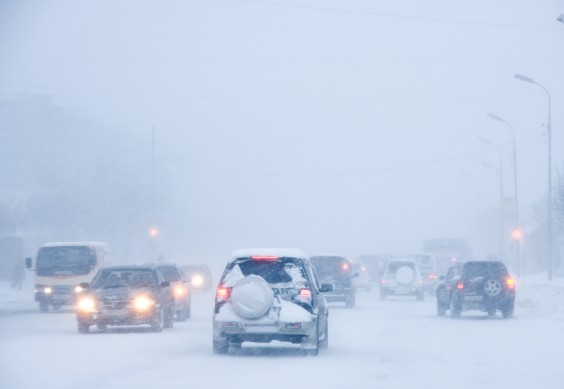Top 10 winter driving tips

Depending on where you live, driving in winter can be a challenge. Simple treks can become seemingly unsurmountable as heavy snow covers the asphalt we all took for granted during other seasons. Operating your vehicle safely may require extra effort during the winter months. Here are our Top 10 Winter Driving Tips:
1. Buckle Up
Fasten your seatbelt and verify your passengers are buckled in before driving. This is our #1 and it is also the law.
2. Have good snow tires
Make sure you have the right tires on the car come late September. Snow tires/all-weather tires offer added traction via their deeper grooves, and you won’t want to wait until the first snowfall to put them on.
3. Don’t get too cozy
We all want to be warm inside our vehicles, but did you know heat can make you sleepy? If you’re feeling fatigued or tired, don’t operate your car and rely on a driver who is alert (and of course, sober).
4. Always look and steer where you want to go.
Back wheels may spin, veer and lose traction but the front wheels will set the path for them to follow. On this same note, avoid sudden moves. Accelerating too aggressively or turning too quickly could cause your vehicle to lose control in the snow. In the event of a skid, ease off the gas, do not brake (until the car is under control), and carefully steer in the direction you want the front of the car to go.
5. Keep your gas tank half full to avoid gas-line freezing
Having too little fuel in your tank makes you more susceptible to having a frozen line, rendering your car useless until it becomes warmer.
6. Maintain distance
Stopping distances may increase greatly in snowy conditions. The normal dry pavement following distance of three to four seconds should be increased to five to six seconds.
7. Don’t stop when going up a hill!
If you’ve got traction, and it’s not a danger to keep going, keep ‘on moving! Getting stuck on a hill is not only frustrating but it’s dangerous for you and the drivers behind you.
8. Use the right coolant
When coolant freezes, it expands. The expansion could potentially damage your engine block which is a very costly repair. A 50/50 coolant-to-water ratio is sufficient to avoid freezing. If you’re unsure about what level your coolant should be, check your vehicle’s owner’s manual or ask a reliable mechanic.
9. Plan your travel and route before getting into the vehicles
You can avoid being tempted to use your smartphone while driving by planning your route before getting into the car. The most current version of Google Maps for iOS and Android will read turn-by-turn driving directions. Before you leave, plug in the address and then place your phone down and let it do the talking!
10. Keep a large bag of sand in the trunk in case you get stuck.
Sprinkling sand under the stuck tires may allow you to get going again. Added bonus here: if your vehicle is rear-wheel drive, having the extra bag(s) of sand in the trunk may help increase traction.
Answer Financial hopes that these winter driving tips help you get safely to and from your destinations. If you’re curious to see what our multi-carrier insurance shopping platform can do for you (savings, time and trusted providers) visit www.answerfinancial.com or call us at 1-800-258-5101
September 11, 2024
Sources:
- NHTSA, “Winter Weather Driving Tips,” https://www.nhtsa.gov/winter-driving-tips
- AAA Exchange, “Winter Driving Tips,” https://exchange.aaa.com/safety/driving-advice/winter-driving-tips/
